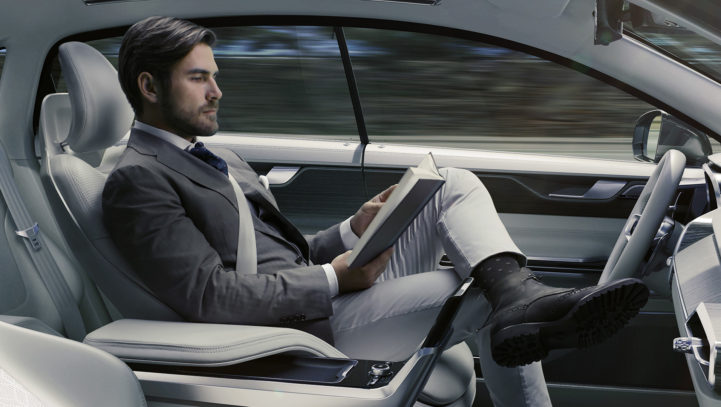Who Is Responsible When a Self-Driving Car Crashes – the Driver or the Car?
You are behind the wheel of a self-driving car that is in automated mode. Your arms are folded, but you are keeping an eye on rush hour traffic. Cars in your lane begin to slow down and then suddenly stop, but yours doesn’t react and rear ends the car in front. When the police arrive, you say your car malfunctioned and that it was handling itself perfectly right up to the point of the accident. The officer has heard just about every excuse in the book, but not that “My car did it!” What happens?
Arizona saw an opportunity to begin testing driverless cars a few years ago, inviting Uber to put its robotic vehicles on the state’s roads. But several months ago, an autonomous Uber-operated car with an emergency back up driver behind the wheel struck and killed a woman on a street in Tempe. It was believed to be the first pedestrian death associated with self-driving technology. Uber quickly suspended testing not only in Tempe, but inPittsburgh, San Francisco and Toronto as well. Self driving technology is in the experimental stage and government officials are still trying to determine how to regulate it.
The ABA Section of Science and Technology Law says that as the law stands now, a motorist cannot avoid liability by saying his self-driving car is at fault, although that defense will likely become viable down the road. TheNational Highway Traffic Safety Administration believes that liability should be based on who is responsible for monitoring the driving environment: the driver or the automated system. For highly automated self-driving vehicles, the NHTSA says that the vehicle’s car system should be held accountable for an accident, not the vehicle’s occupant.
Automated cars employ a combination of sensors,cameras, radar, and other artificial intelligence technology to steer their way through city streets. The Center forLaw, Science and Innovation at ASU Sandra DayO’Connor College of Law says that if fault for a collision gets placed on the automated system, then numerous entities could be held accountable: the technology software maker, the car parts maker, the car manufacturer,or even a transportation service like Uber. Establishing liability in a case like this would require complicated and technical forensic investigations.
As things currently stand, most accident-injury cases are relatively straightforward in terms of responsibility.Motorists who speed, follow too closely, run a red light or make an illegal left turn are at fault. But if the collision involves a self-driving car, liability disputes could result with companies becoming embroiled in complex, lengthy and expensive product liability litigation. Experts would need to download the black boxes from the vehicles and evaluate the precise system failures that caused the accident, a time-consuming and expensive process. TheDepartment of Transportation says each state “should consider how to allocate liability among autonomous vehicle owners, operators, passengers, manufacturers and others when a crash occurs.” It is not just what the driver did or didn’t do, but what the car did or didn’t do.
Last year Michigan became the first state to pass legislation dealing with self-driving cars. The statute says that if an autonomous vehicle’s operating system is at fault for a collision, then the manufacturer is responsible. Of course, the only way to “talk to a vehicle”that drives itself is to get the data and information the vehicle used to make its decisions.
When it comes to typical car accidents, determining which party is at fault can already be difficult. That challenge grows exponentially when vehicles running on autonomous systems are involved. At this point many of the vehicles dubbed as “self-driving” have not yet achieved full autonomy. Most cars still rely on some input from the operator, meaning humans and cars will be sharing joint responsibility.
As car technology advances, an ever increasing number of self-driving cars will be on U.S. streets and highways.Experts believe automated cars are far safer than human driven cars and will dramatically reduce the number of accidents. Studies show that self-driving cars will ease traffic congestion, shorten travel time, burn less fuel,lower emissions and provide transportation to those who cannot drive. A 2013 study by the Eno Center forTransportation (a nonprofit think-tank in Washington,D.C.) estimates that if 10% of the cars on U.S. roads were self-driving, 1,100 lives would be saved annually. If 90% were automated, 21,700 lives would be saved each year.
If you or someone you know has been injured in an accident, please call Blake Law Firm right away. Mr.Blake has practiced law for over 45 years and has a staff of very experienced attorneys and legal assistants ready to help you.Drive Safely!



